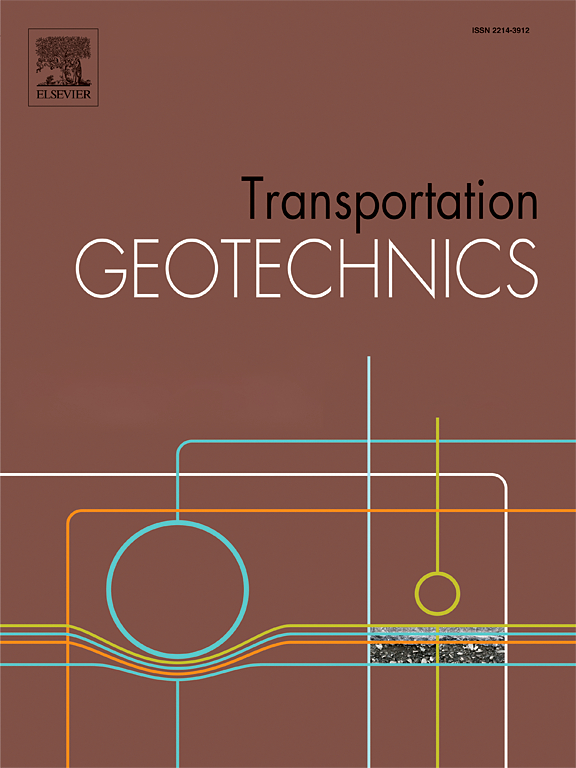Forensic investigation and chemical remediation of a collapsed highway embankment slope in Houston, Texas
IF 4.9
2区 工程技术
Q1 ENGINEERING, CIVIL
引用次数: 0
Abstract
Transportation infrastructure, such as highway embankment slopes and retaining walls, are often constructed using locally available fill materials. Slopes constructed with such fills can pose problems as those fills can be expansive and experience surficial failures due to significant strength reductions over the years from cyclic moisture ingress and egress. Repeated wetting and drying cycles often result in the formation of desiccation cracks, which, when compounded by rainfall events, lead to moisture infiltration in the cracks and cause surficial slope failures. This paper provides a forensic investigation conducted on one such collapsed highway embankment slope in Houston, Texas, employing exhaustive timeseries optical image analysis, site characterization, laboratory studies, and numerical modeling. In-situ investigations included determining the site properties using the Texas cone penetration test and retrieving augered soil specimens. Site characterization indicated that the embankment soil was expansive in nature and susceptible to moisture-induced distress. Subsequently, laboratory shear strength studies were performed, and it was determined that the loss in cohesion in the problematic clay during the fully softening stage was responsible for initiating slope failure. Shallow slope failure was often attributed to surficial cracking due to moisture migration and reduction in shear strength from peak to fully-softened, and further aggravated by insufficient drainage along the slope and vegetation removal. Surficial soil treatment with a calcium-based stabilizer was determined as a potential mitigation method. Engineering studies and numerical analyses showed that soil stabilization using calcium-based stabilizers notably enhanced the mechanical strength properties and overall stability of the slope under future extreme precipitation conditions. Overall, the study emphasized the importance of moisture regulation and the inclusion of anticipated rainfall projections within numerical models along with suitable chemical stabilizers to stabilize problematic embankment subgrade conditions in order to ensure an adequate performance of transportation infrastructure for long-term serviceability.
求助全文
约1分钟内获得全文
求助全文
来源期刊

Transportation Geotechnics
Social Sciences-Transportation
CiteScore
8.10
自引率
11.30%
发文量
194
审稿时长
51 days
期刊介绍:
Transportation Geotechnics is a journal dedicated to publishing high-quality, theoretical, and applied papers that cover all facets of geotechnics for transportation infrastructure such as roads, highways, railways, underground railways, airfields, and waterways. The journal places a special emphasis on case studies that present original work relevant to the sustainable construction of transportation infrastructure. The scope of topics it addresses includes the geotechnical properties of geomaterials for sustainable and rational design and construction, the behavior of compacted and stabilized geomaterials, the use of geosynthetics and reinforcement in constructed layers and interlayers, ground improvement and slope stability for transportation infrastructures, compaction technology and management, maintenance technology, the impact of climate, embankments for highways and high-speed trains, transition zones, dredging, underwater geotechnics for infrastructure purposes, and the modeling of multi-layered structures and supporting ground under dynamic and repeated loads.
 求助内容:
求助内容: 应助结果提醒方式:
应助结果提醒方式:


